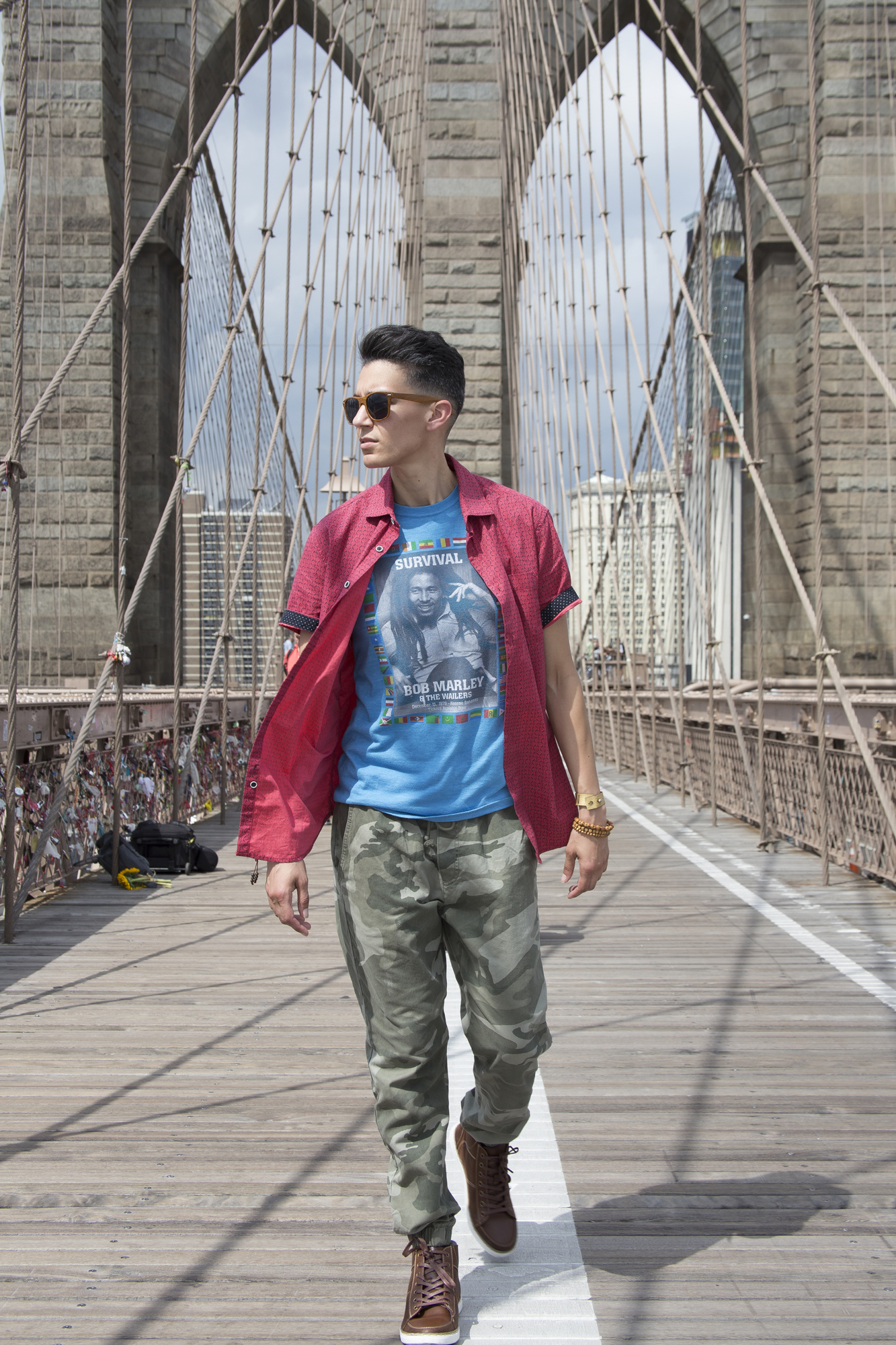Brooklyn Bridge

When in New York, you can't avoid the sight of the Brooklyn Bridge. Whether you're in a car, taking the subway, riding on a boat, or just in the Manhattan or Brooklyn parks on either side of this bridge...you can't miss its engineering significance. The Brooklyn Bridge opened on May 24, 1883 as a solution to the boroughs' transit problems. With a cost of $15.5 millions, 13 years of construction, and 27 lives lost, the largest suspension bridge ever built was complete. John A. Roebling was the architect for the Brooklyn Bridge, but his son and daughter-in-law assisted in its completion. Roebling died during the site surveying process of the construction. He never saw his design complete. This bridge revolutionized the steel construction industry as well as the suspension bridge building. What amazes me the most about bridge design is the logistics to construct such long span construction, especially over water. As I walked the bridge on foot, I distinctly remember the vertical cables that supported the bridge deck. They almost appeared to be like a thick rope with its coating covering the steel cables. Roebling innovation technology for this bridge construction involved using steel cables versus iron and then create a "spinning" on-site method to develop multiple bonded cables. This avoided transporting heavy loads of pre-manufaturered cables and hoisting in place.
BUILDING NAME
Brooklyn Bridge
LOCATION
Brooklyn, NY
DATE BUILT
1883
STYLE
Gothic Revival
ARCHITECT
Another Roebling contribution to the design was the increasing the rigidity of the bridge deck. In previous designs of suspended bridges, the bridge deck stiffness was the result of significant deflections, sway action, and a flexible structure. I'm sure you have seen or heard of the Tacoma Narrows Bridge Collapse in 1940. The bridge was only five months old when it collapsed due to significant oscillation behaviors from wind forces. The construction workers actually felt seasickness during the construction, which led to its nickname of the "Galloping Gertie." Its slender bridge deck design was one of the reasons for its unstableness. Roebling created stiffness in the bridge deck by designing a series of trusses for the platform. Horizontal and vertical girders with cross-bracing diagonal elements comprise the trusses, resulting in a much more stiff structure to resist the lateral (sideways) and uplift wind forces that the bridge structure undergoes.
The construction process usually starts with the enormous towers followed by the anchorage structure at the ends of the bridge. This anchors support the tension forces from the horizontal cables. After the main cables are in place, the suspended cables (vertical cables) are installed to support the bridge deck construction. Section by section is constructed until the entire bridge is complete. Engineering a bridge for the transportation of the public is only half of the engineering tasks. Developing a strategy for the implementation of sequence of constructing the bridge is the second half of the project. Creating a constructible project should be the top priority for any engineer. Architects and engineers must work together to create a aethetically pleasing design while keep every construction worker safe during the process.
Every time I visit New York, the stories of the people who worked on the project bring me back. I stand and marvel of the power of what human can achieve; and the Brooklyn Bridge is always one of those amazing achievements.







